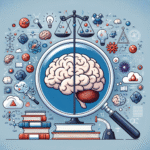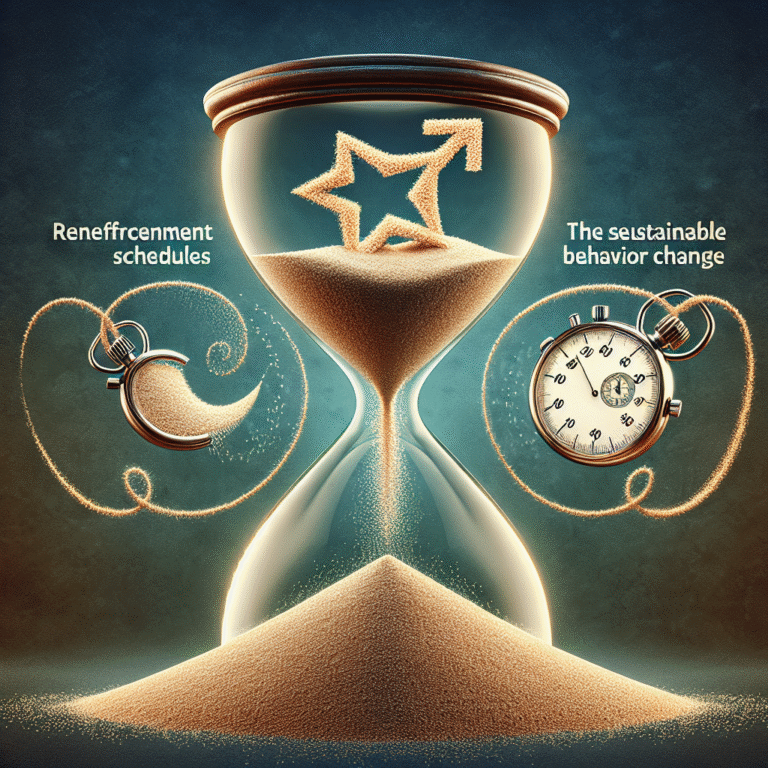
Introduction: The Visual Landscape of Consumer Choice
As consumers navigate an increasingly complex marketplace, the power of visual cues emerges as a captivating force affecting decisions at every turn. Attention Under Scrutiny: The Role of Visual Cues in Consumer Behavior dives into this fascinating interplay, revealing how visual elements can significantly steer consumer choices. From the eye-catching colors of a brand’s logo to the strategic placement of products on store shelves, visual cues hold the keys to capturing attention, shaping perceptions, and ultimately driving purchase decisions.
In a world bombarded by stimuli, understanding how visual cues operate can empower businesses to enhance their marketing strategies, cultivate brand loyalty, and elevate their sales. This article explores the significance of visual cues in consumer behavior, supported by research and case studies that illuminate their effective deployment in real-world scenarios.
Understanding Attention: A Psychological Perspective
The Science of Attention
Attention is a scarce resource in the cognitive landscape. Psychological studies show that it can be divided into various types: selective attention, sustained attention, and divided attention. Each type plays a crucial role in how consumers engage with visual stimuli.
Selective Attention: This type focuses on particular stimuli while ignoring others. For example, a consumer may notice an intriguing advertisement amidst a cluttered webpage but may overlook less compelling visuals.
Sustained Attention: This refers to maintaining focus over time. Will a consumer stay engaged with a promotional email rich in visual cues, or will they scroll away?
- Divided Attention: In settings like multitasking, consumers often split their focus. Marketers must design visuals that can attract attention rapidly.
Visual Cues as Attention Grabbers
Visual cues, encompassing colors, shapes, and design, play a pivotal role in directing attention. Research suggests that visuals are processed 60,000 times faster than text, underlining their powerful potential in consumer behavior. They not only grab attention but also set the emotional tone for the interaction.
Case Study 1: Coca-Cola’s Color Psychology
Coca-Cola effectively uses red—a color often associated with excitement, passion, and appetite—in its branding. A study showed that consumers tend to associate red with energy and urgency, leading to impulsive buying. This case exemplifies Attention Under Scrutiny: The Role of Visual Cues in Consumer Behavior, showing how colors can evoke emotions and drive purchases.
The Role of Visual Cues in Digital Marketing
Visual Hierarchy and Usability
In digital spaces, visual hierarchy is crucial. It involves organizing elements in a way that naturally draws consumers’ eyes to the most important parts of a website or advertisement.
Table 1: Elements of Visual Hierarchy
| Element | Description | Effect on Consumer Behavior |
|---|---|---|
| Size | Larger items attract more attention | Prioritize critical information effectively |
| Color | Contrasting colors command attention | Create focal points that engage users |
| Alignment | Organized layouts guide flow | Enhance ease of navigation |
| Proximity | Related items grouped together | Foster quick decision-making |
The Power of Infographics
Visual representations of data, such as infographics, can simplify complex information, enabling easier digestion and retention. A study revealed that 65% of people are visual learners, highlighting the effectiveness of infographics in capturing attention.
Case Study 2: Airbnb’s Visual Storytelling
Airbnb successfully employs beautiful imagery on its platform, showcasing inviting spaces and experiences. Their marketing consistently incorporates high-quality visuals that evoke emotion and wanderlust. This aligns with the theme of Attention Under Scrutiny: The Role of Visual Cues in Consumer Behavior, demonstrating how compelling visuals can enhance storytelling and deepen consumer connection.
The Impact of Social Media Visuals
Visuals in Advertising
Social media platforms thrive on visual content. According to research, posts with visuals receive 94% more views than those without. Brands utilizing sharp, vibrant images are more likely to attract clicks and shares.
Case Study 3: Instagram’s Success through Imagery
Instagram’s rise as a powerful marketing tool is largely due to its visual-centric model. Brands that carefully craft their imagery see higher engagement rates and increased brand loyalty. The strategic use of visuals in their marketing illustrates Attention Under Scrutiny: The Role of Visual Cues in Consumer Behavior, evidenced by the strong correlation between visual appeal and consumer engagement.
Enhancing In-Store Experiences
Visual Merchandising
In physical retail spaces, visual merchandising employs bold displays, creative layouts, and striking signage to guide customer behavior.
Chart 1: Key Components of Effective Visual Merchandising
| Component | Description | Impact on Consumer Behavior |
|---|---|---|
| Window Displays | Attracts passersby | Drives foot traffic |
| Signage | Guides customers within the store | Facilitates informed decision-making |
| Product Placement | Strategic location influences purchases | Enhances visibility of key products |
Case Study 4: Apple’s Store Layout
Apple stores are renowned for their sleek and minimalistic designs. The open layout encourages exploration and interaction with products. By controlling the visual environment, Apple fosters a unique shopping experience, demonstrating the core principles of Attention Under Scrutiny: The Role of Visual Cues in Consumer Behavior.
Visual Cues in Packaging
The Importance of Product Packaging
Packaging presents a crucial opportunity to communicate brand values and attract consumers. A study found that 72% of consumers say that packaging design influences their purchasing decisions.
Case Study 5: Tiffany & Co.’s Iconic Blue Box
The distinctive blue box of Tiffany & Co. represents elegance and exclusivity. The unboxing experience adds emotional value, turning a simple purchase into a memorable occasion. This case reinforces the idea of Attention Under Scrutiny: The Role of Visual Cues in Consumer Behavior, showcasing how packaging can elevate a brand’s appeal.
Emotional Connections and Visual Branding
Building Brand Identity through Visuals
Visual branding extends beyond mere aesthetics; it’s about creating an emotional connection. Brands that leverage visuals to convey their values and mission can foster loyalty among consumers.
Case Study 6: Nike’s Empowering Imagery
Nike’s branding often showcases inspiring athletes overcoming obstacles. This visual storytelling fosters an emotional resonance with consumers, encouraging them to aspire to greatness while aligning with the brand’s mission. This alignment illustrates the essence of Attention Under Scrutiny: The Role of Visual Cues in Consumer Behavior.
The Future of Visual Cues in Consumer Behavior
Trends in Visual Communication
The rise of augmented reality (AR) and virtual reality (VR) presents new avenues for engaging consumers. These technologies can create immersive experiences, allowing users to interact with products before purchasing, further enhancing attention.
The Role of Personalization
As brands move toward personalized marketing, the adaptation of visual elements to match individual preferences can lead to higher engagement rates. The fusion of data analytics and design will shape how brands approach visual cues.
Conclusion: Harnessing the Power of Visuals
Understanding the complex relationship between attention and visual cues can empower brands to craft more effective marketing strategies. The insights presented in this article under Attention Under Scrutiny: The Role of Visual Cues in Consumer Behavior reveal that visual cues are not just supplementary—they are essential in shaping consumer perceptions and driving behavior. As businesses adapt to the evolving marketplace, harnessing the power of visual cues will remain a game-changer in capturing consumer attention and fostering loyalty.
By continuing to innovate in visual presentation and embracing emerging technologies, brands can ensure their messages resonate more deeply, ultimately securing a lasting connection with their audience.
FAQs
1. How do visual cues influence consumer decision-making?
Visual cues capture attention and evoke emotions, which significantly influences how consumers perceive products and brands, ultimately affecting their purchasing behavior.
2. Can visual cues lead to impulse buying?
Yes, visuals such as vibrant colors and eye-catching layouts can create feelings of urgency or excitement, leading consumers to make spontaneous purchases.
3. How can brands effectively use color in their marketing?
Brands can use color psychology to evoke specific emotions or reactions related to their product. For instance, warm colors can create a sense of urgency, while cool colors evoke calmness.
4. What role does packaging play in consumer behavior?
Packaging serves as a crucial touchpoint in conveying brand identity. Effective packaging can create a positive first impression and evoke emotional connections that influence purchasing decisions.
5. How can businesses implement visual cues in digital marketing?
Businesses can enhance their digital marketing strategies through compelling graphics, infographics, and user-friendly layouts that maintain visual hierarchy to efficiently attract and retain consumer attention.
By understanding and utilizing the essence of visual cues within their marketing strategies, brands can significantly optimize their impact within a crowded marketplace and build stronger consumer relationships.














